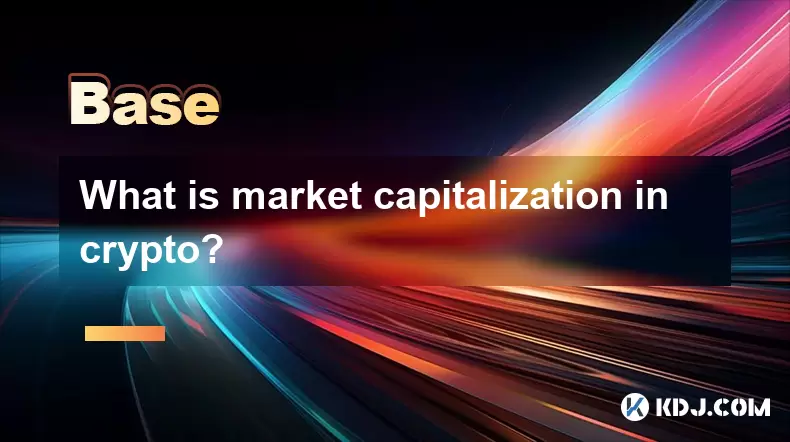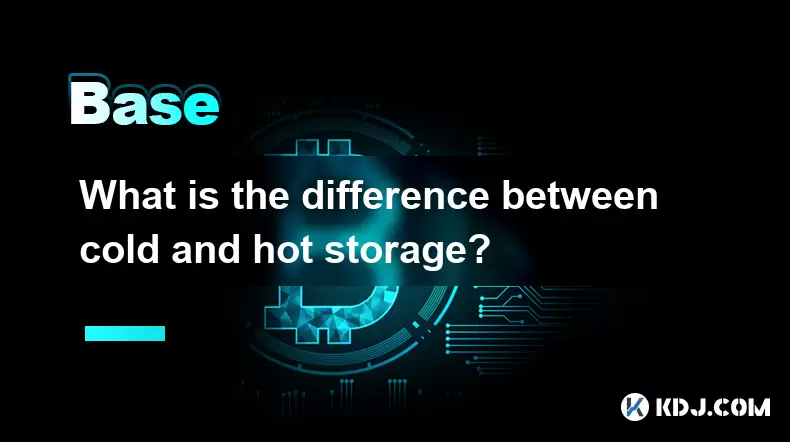-
 Bitcoin
Bitcoin $118300
-3.52% -
 Ethereum
Ethereum $4554
-3.81% -
 XRP
XRP $3.090
-5.78% -
 Tether USDt
Tether USDt $1.000
0.04% -
 BNB
BNB $842.0
-0.27% -
 Solana
Solana $194.6
-3.24% -
 USDC
USDC $0.9998
0.00% -
 TRON
TRON $0.3600
-0.20% -
 Dogecoin
Dogecoin $0.2243
-7.95% -
 Cardano
Cardano $0.9066
2.57% -
 Hyperliquid
Hyperliquid $45.89
-4.06% -
 Chainlink
Chainlink $22.49
-5.34% -
 Stellar
Stellar $0.4261
-6.01% -
 Sui
Sui $3.753
-5.87% -
 Bitcoin Cash
Bitcoin Cash $592.1
-3.33% -
 Ethena USDe
Ethena USDe $1.001
-0.01% -
 Hedera
Hedera $0.2502
-5.51% -
 Avalanche
Avalanche $23.71
-6.22% -
 Litecoin
Litecoin $121.8
-6.36% -
 Toncoin
Toncoin $3.416
-2.58% -
 UNUS SED LEO
UNUS SED LEO $9.323
0.85% -
 Shiba Inu
Shiba Inu $0.00001291
-6.93% -
 Uniswap
Uniswap $10.91
-9.13% -
 Polkadot
Polkadot $4.010
-5.38% -
 OKB
OKB $93.46
-9.08% -
 Dai
Dai $0.9999
0.00% -
 Bitget Token
Bitget Token $4.559
-4.99% -
 Cronos
Cronos $0.1545
-6.93% -
 Ethena
Ethena $0.7362
-5.51% -
 Aave
Aave $311.6
-4.32%
What is market capitalization in crypto?
Market cap, calculated as price × circulating supply, helps gauge a crypto’s value and size, with large-caps like Bitcoin offering stability and small-caps bringing higher risk and growth potential.
Aug 13, 2025 at 11:35 am

Understanding Market Capitalization in Cryptocurrency
Market capitalization, commonly referred to as market cap, is a key metric used to assess the relative size and value of a cryptocurrency. It is calculated by multiplying the current price of a single unit of the cryptocurrency by its total circulating supply. This formula can be expressed as:
- Market Cap = Current Price × Circulating Supply
For example, if a cryptocurrency has a price of $10 per coin and 50 million coins in circulation, its market cap would be $500 million. This figure helps investors compare the overall value of different digital assets, even if their individual prices vary significantly. Unlike traditional stock market capitalization, which is based on shares outstanding, crypto market cap relies on circulating supply, which excludes coins that are locked, reserved, or not yet released.
Different Types of Market Cap in Crypto
Cryptocurrencies are often categorized based on their market cap into large-cap, mid-cap, and small-cap assets. - Large-cap cryptocurrencies typically have a market cap exceeding $10 billion. Examples include Bitcoin (BTC) and Ethereum (ETH). These are generally considered more stable and less volatile due to their widespread adoption and liquidity.
- Mid-cap cryptocurrencies range between $1 billion and $10 billion in market cap. These projects often show growth potential but carry higher risk compared to large-cap assets.
- Small-cap cryptocurrencies fall below $1 billion. While they may offer high return potential, they also come with increased volatility and lower liquidity.
Understanding these categories helps investors balance risk and diversify their portfolios effectively.
Why Circulating Supply Matters More Than Total Supply
When calculating market cap, it is critical to use circulating supply rather than total or maximum supply. Circulating supply refers to the number of coins that are currently available and tradable in the market. Some projects have a large number of coins that are locked in smart contracts, held by the development team, or scheduled for future release. Including these in the calculation would distort the true market value.
For instance, a coin might have a maximum supply of 1 billion, but only 200 million are in circulation. Using the full 1 billion would overstate the market cap by five times. Reliable data platforms like CoinMarketCap and CoinGecko use circulating supply to provide accurate market cap figures.How to Check Cryptocurrency Market Cap
To find the market cap of any cryptocurrency, follow these steps: - Visit a trusted cryptocurrency data aggregator such as CoinMarketCap.com or CoinGecko.com
- Use the search bar to enter the name or ticker symbol of the cryptocurrency
- On the project’s overview page, locate the “Market Cap” statistic, usually displayed near the price chart
- Verify that the circulating supply and current price are consistent with the displayed market cap using the formula
- Compare the asset’s market cap with others in the same category to assess its relative position
These platforms update data in real time, ensuring investors have access to the most current information.
Limitations and Misinterpretations of Market Cap
While market cap is a useful benchmark, it does not tell the whole story. One common misconception is assuming that a lower-priced coin is “cheaper” or a better investment than a high-priced one, ignoring the market cap. A coin priced at $0.10 with a $2 billion market cap is fundamentally different from a $100 coin with a $500 million market cap.
Another limitation arises with low float tokens—cryptocurrencies where only a small portion of the total supply is actively traded. In such cases, the market cap may not reflect true market dynamics, as a small amount of trading volume can cause large price swings. Additionally, market cap cannot measure utility, adoption, or technological innovation—factors that also influence long-term value.Market Cap vs. Fully Diluted Valuation (FDV)
Another related metric is Fully Diluted Valuation (FDV), which estimates the market cap if the entire maximum supply of a cryptocurrency were in circulation. FDV is calculated as: - FDV = Current Price × Maximum Supply
This metric is useful for understanding potential future valuation pressure if all tokens enter the market. For example, a project with a $1 billion market cap but a $10 billion FDV may face downward price pressure when additional tokens are released. Investors often compare market cap and FDV to assess tokenomics and supply distribution.
Frequently Asked Questions
Can a cryptocurrency with a low price have a high market cap?
Yes. The individual price of a coin does not determine its market cap. A cryptocurrency priced at $1 can have a higher market cap than one priced at $100 if its circulating supply is significantly larger. For example, if Coin A is $1 with 1 billion in circulation, its market cap is $1 billion. Coin B at $100 with only 5 million in circulation has a market cap of $500 million—lower than Coin A.Is market cap manipulated in the crypto space?
In some cases, yes. Projects with low trading volume and concentrated supply can experience artificial inflation of market cap through coordinated buying, known as “pump and dump” schemes. Investors should examine trading volume, liquidity, and exchange listings alongside market cap to detect potential manipulation.Does a higher market cap mean a cryptocurrency is safer to invest in?
Generally, large-cap cryptocurrencies are considered less risky due to their established networks, higher liquidity, and broader adoption. However, no investment is entirely safe. Even large-cap assets can experience sharp declines during market corrections or regulatory changes.Why do some new cryptocurrencies show a high market cap immediately after launch?
This can occur when a project launches with a large portion of its supply already in circulation and sets a high initial price through mechanisms like bonding curves or auction models. It may also result from low float and high demand during the initial trading phase, creating a temporarily inflated market cap that may not be sustainable.
Disclaimer:info@kdj.com
The information provided is not trading advice. kdj.com does not assume any responsibility for any investments made based on the information provided in this article. Cryptocurrencies are highly volatile and it is highly recommended that you invest with caution after thorough research!
If you believe that the content used on this website infringes your copyright, please contact us immediately (info@kdj.com) and we will delete it promptly.
- Kazakhstan's Crypto Leap: Bitcoin ETF and Central Asia's Digital Finance Future
- 2025-08-13 12:45:19
- BlockDAG Presale Blazes Past $371M: Fundraising Frenzy Fuels Crypto Sensation
- 2025-08-13 13:05:21
- Meme Coins: Chasing the 2025 Surge – Which Will Moonshot?
- 2025-08-13 10:25:23
- Bitcoin's Wild Ride: Rally, Pullback, and What's Next
- 2025-08-13 10:25:23
- Bitcoin, Bitmax, and Institutional Demand: A New Era of Crypto Investment
- 2025-08-13 10:45:12
- Solana, ROAM, and Airdrops: What's the Buzz in 2025?
- 2025-08-13 11:35:13
Related knowledge

Can crypto transactions be reversed?
Aug 10,2025 at 01:35am
Understanding the Immutability of Blockchain TransactionsCryptocurrency transactions are built on blockchain technology, which is designed to be immut...

What happens if I forget my crypto wallet password?
Aug 09,2025 at 08:50am
Understanding the Role of a Crypto Wallet PasswordA crypto wallet password serves as a critical security layer that protects access to your digital as...

What is the difference between cold and hot storage?
Aug 12,2025 at 01:01am
Understanding Cold Storage in CryptocurrencyCold storage refers to offline methods of storing cryptocurrency private keys, ensuring they are not expos...

What is hot storage in crypto?
Aug 11,2025 at 07:08am
Understanding Hot Storage in CryptocurrencyHot storage refers to cryptocurrency wallets that are connected to the internet. Unlike cold storage soluti...

What is cold storage in crypto?
Aug 13,2025 at 11:35am
Understanding Cold Storage in CryptocurrencyCold storage in cryptocurrency refers to a method of storing digital assets offline, away from internet-co...

What is the best crypto portfolio tracker?
Aug 10,2025 at 05:08am
Understanding the Role of a Crypto Portfolio TrackerA crypto portfolio tracker is a digital tool designed to help investors monitor the performance of...

Can crypto transactions be reversed?
Aug 10,2025 at 01:35am
Understanding the Immutability of Blockchain TransactionsCryptocurrency transactions are built on blockchain technology, which is designed to be immut...

What happens if I forget my crypto wallet password?
Aug 09,2025 at 08:50am
Understanding the Role of a Crypto Wallet PasswordA crypto wallet password serves as a critical security layer that protects access to your digital as...

What is the difference between cold and hot storage?
Aug 12,2025 at 01:01am
Understanding Cold Storage in CryptocurrencyCold storage refers to offline methods of storing cryptocurrency private keys, ensuring they are not expos...

What is hot storage in crypto?
Aug 11,2025 at 07:08am
Understanding Hot Storage in CryptocurrencyHot storage refers to cryptocurrency wallets that are connected to the internet. Unlike cold storage soluti...

What is cold storage in crypto?
Aug 13,2025 at 11:35am
Understanding Cold Storage in CryptocurrencyCold storage in cryptocurrency refers to a method of storing digital assets offline, away from internet-co...

What is the best crypto portfolio tracker?
Aug 10,2025 at 05:08am
Understanding the Role of a Crypto Portfolio TrackerA crypto portfolio tracker is a digital tool designed to help investors monitor the performance of...
See all articles

























































































